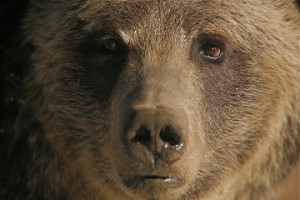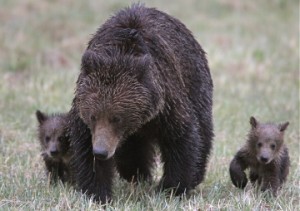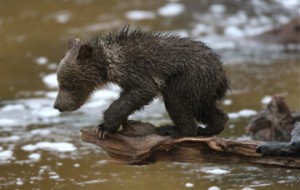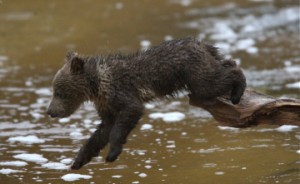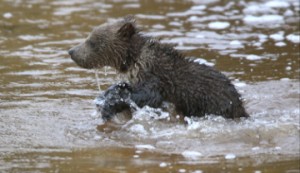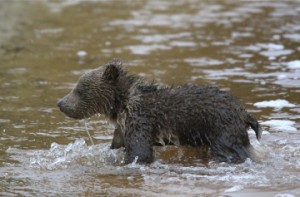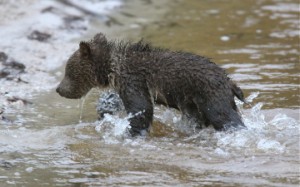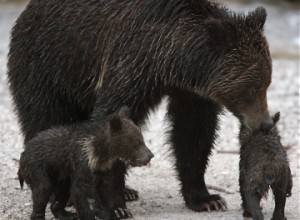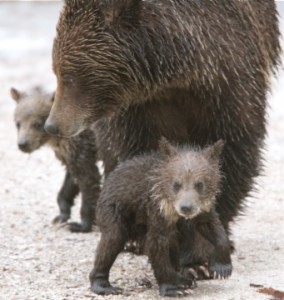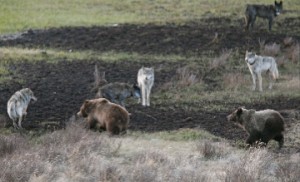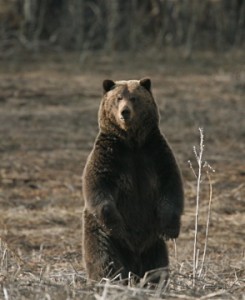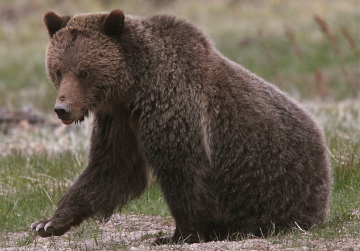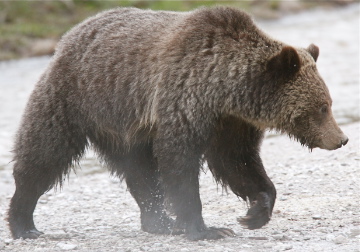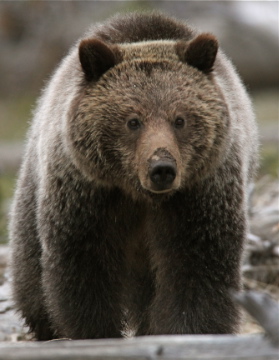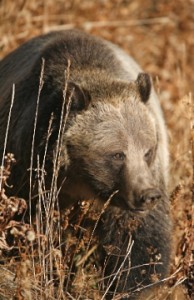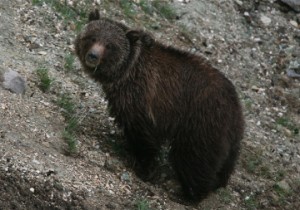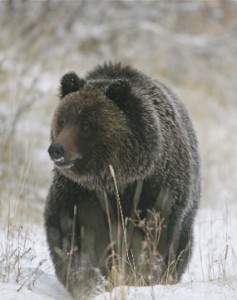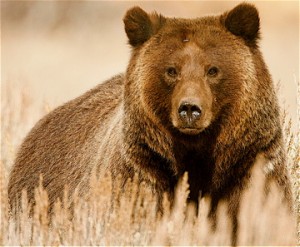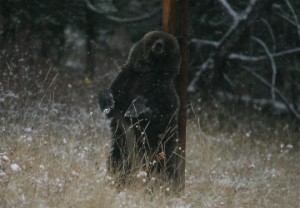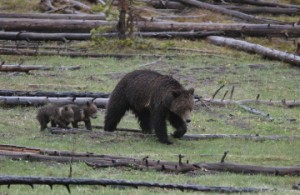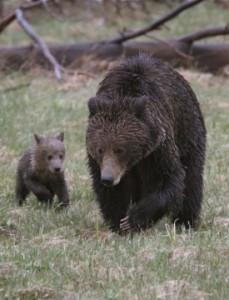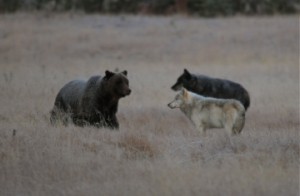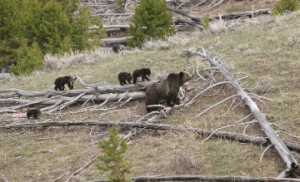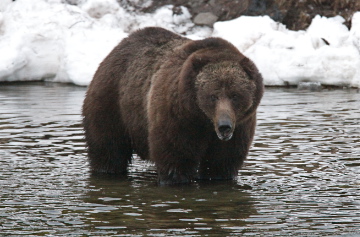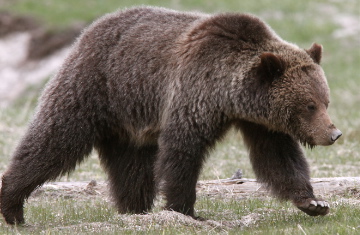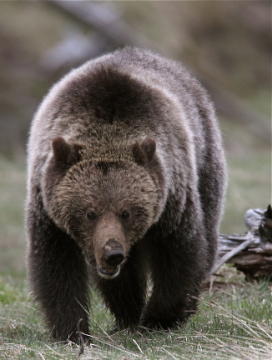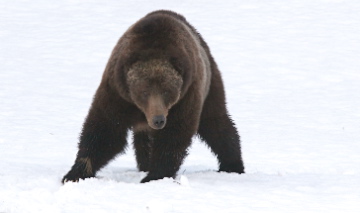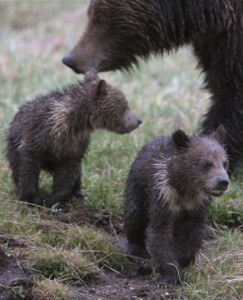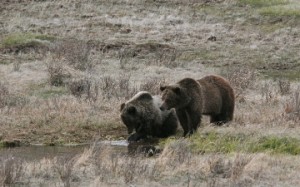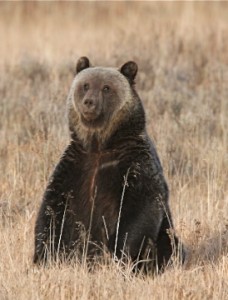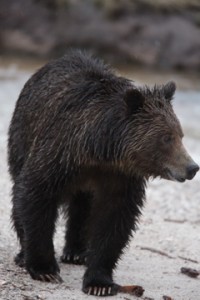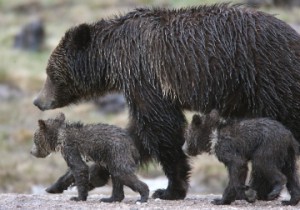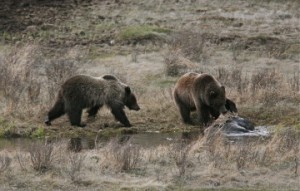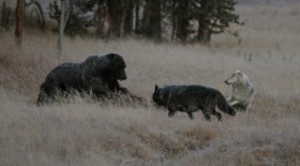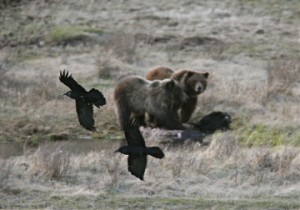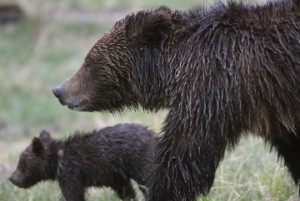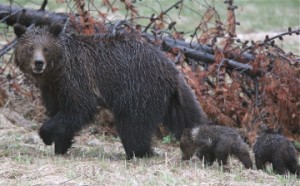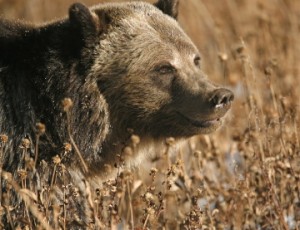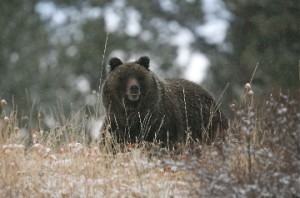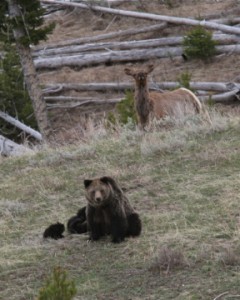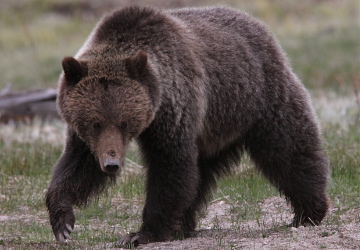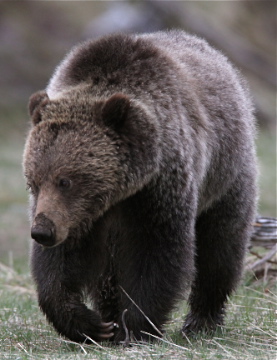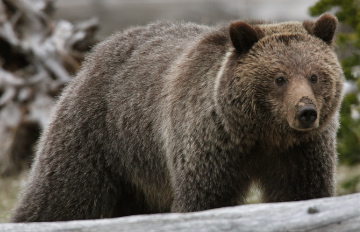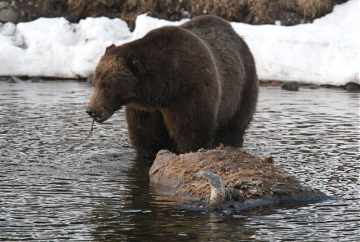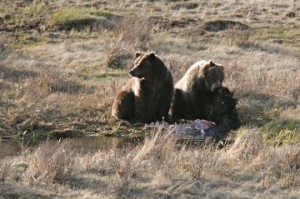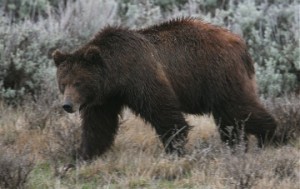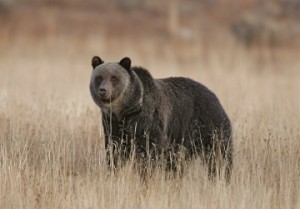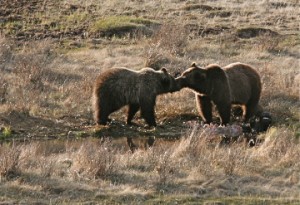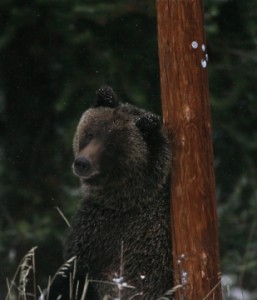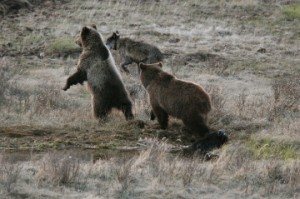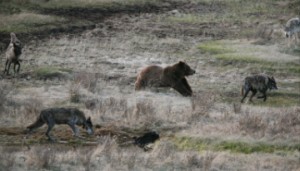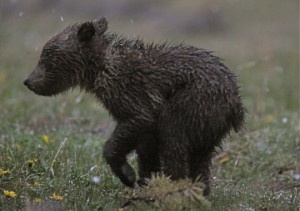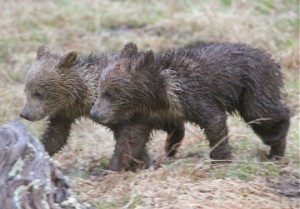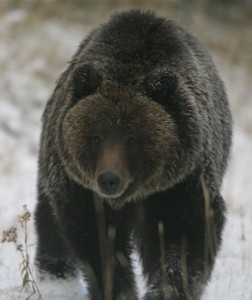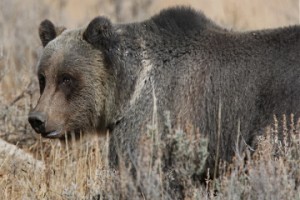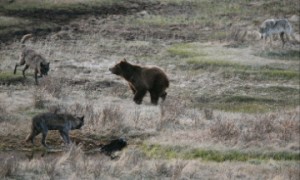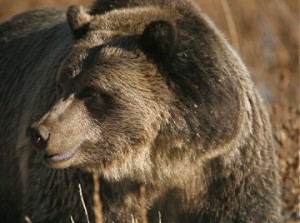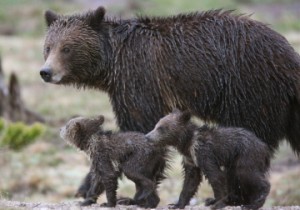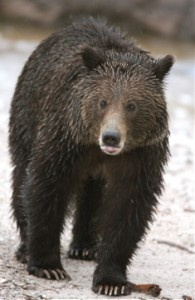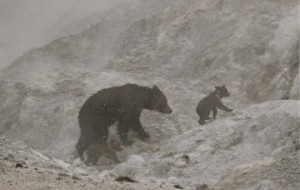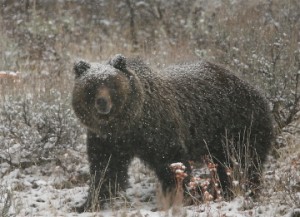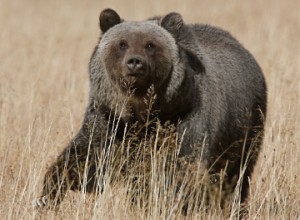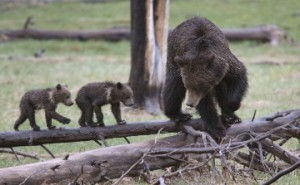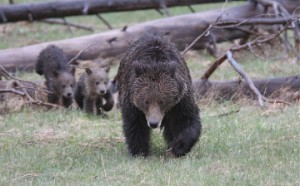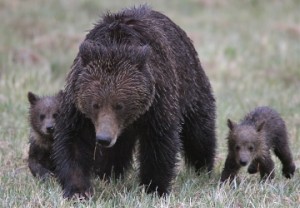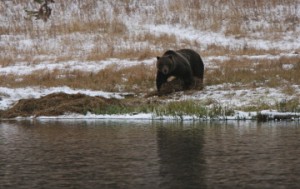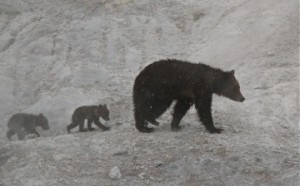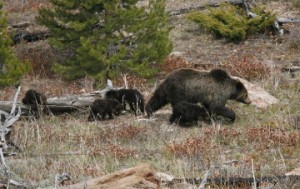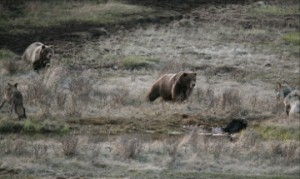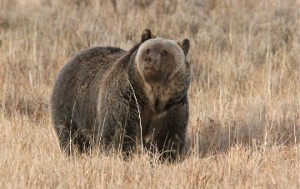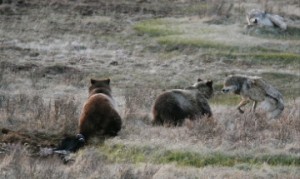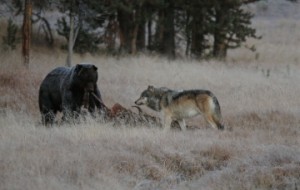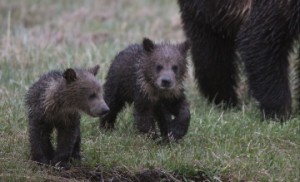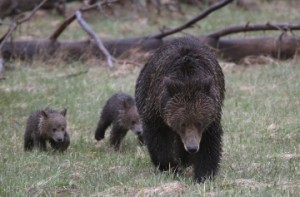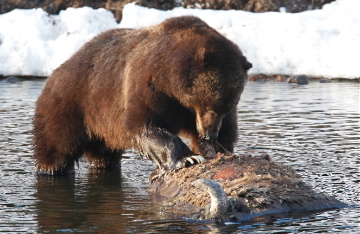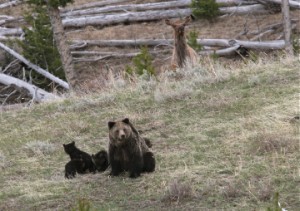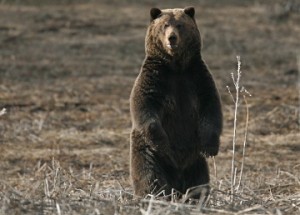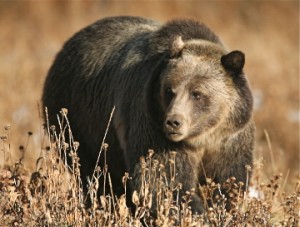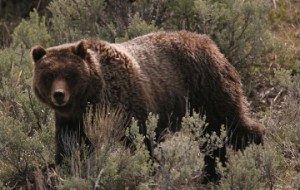Grizzly Bear
You say grizzly bear and you get all kinds of opinions. They strike fear, respect, mystery, intrigue, admiration, love and hate. Once they roamed all over the western states from Kansas to California. It is interesting to note that on the California State symbol, the grizzly sits prominently in it. Look for a grizzly in California these days and the only place you will find one is in a zoo. Now, grizzlies are only naturally found in the Yellowstone ecosystem (which include parts of WY, ID & MT), and northern MT, ID and also WA. Possibly a small remnant population exists in the San Juan Mountains in CO. But most grizzlies reside in western Canada and Alaska. Grizzlies are a subspecies of the Euro-Asian brown bears. Typically, they live 20-25 years in the wild. Their strength is impressive. The largest grizzly can stand on its hind legs and top 8 feet. When you walk in their domain you feel that it is they that are omnipotent. But in fact when you look at the numbers of them left in the wild it is we that are omnipotent.
One problem that faces grizzlies (there are many) is that they have one of the lowest reproductive rates of all terrestrial mammals in N America. Grizzlies don’t reach sexual maturity until they are at least 5 years old. On average, females produce two cubs per litter, during which time she will care for her cubs for up to two years and she will not mate again during that time. It takes up to several years after that for her to reproduce again another litter even if her cubs died because of disease, injury, and environmental factors or were killed. Male grizzly bears have such large ranges that just simply finding a female to mate with is difficult to find in areas of low population densities. Immigrant males that roam into a females range can be infanticidal towards resident females with cubs.
Grizzlies are subject to fragmentation, a form of population segregation due to habitat loss. Fragmentation causes a decrease in genetic variability because of inbreeding within the species which decreases the fitness of the population for several reasons. First, inbreeding forces competition with relatives which decreases the evolutionary fitness of the species. Secondly, the decrease in genetic variability causes an increased possibility that a lethal homozygous recessive gene trait may become present, causing a decreased average litter size.
Grizzly bears are considered to be omnivores since much of their diet ( 80- 90%) is of plant matter. They can prey on any large animal but fish such as salmon, trout, and bass are some of their favorite meat sources. The bears that feed on a fish diet grow much larger in size than the inland ones. The size of a smaller adult male grizzly is around 300 lbs (inland) but they can top over 1000 lbs (coastal). The geographic region depends on the food sources. In Yellowstone, they like to eat the white bark pine nut which is rich in protein. Grizzlies will also dig for food sources such as roots, rodents, insects, and tubers and they will also eat carrion. When food sources are in abundance then grizzly bears will feed alongside each other but otherwise they tend to live more isolated lives. The fall season is a time for grizzlies to consume everything they can which is otherwise known as hyperphagia where they can gain as much as 3 lbs of weight per day. Hibernation period follows but it is often debated as to whether they technically hibernate. Much of the debate revolves around body temperature and the ability of the bears to move around during hibernation. In Yellowstone, when wolves kill an elk near a den site in the winter time it is not unheard of to find that a grizzly takes over the carcass. There is a symmetry to these apex predators with the grizzly at the zenith and the wolves, mountain lions and black bears in competition for food sources.
Even though the grizzly presents a physical threat to humans, it is we who present a far bigger threat to them. Grizzlies now roam in only 2% of their historic range in the lower 48 states. Conflicts between grizzly and humans results more likely in the bear’s death. When we enter their habitat and homeland with respect and care then we can experience and appreciate their presence. Once a grizzly associates humans with food then they are considered dangerous and often euthanized. If corridors are preserved between the Yellowstone ecosystem and the Yukon range then this will give the grizzly a viable ecosystem to live, breed and do what they are supposed to do- which is to play their part in maintaining a healthy ecosystem.
